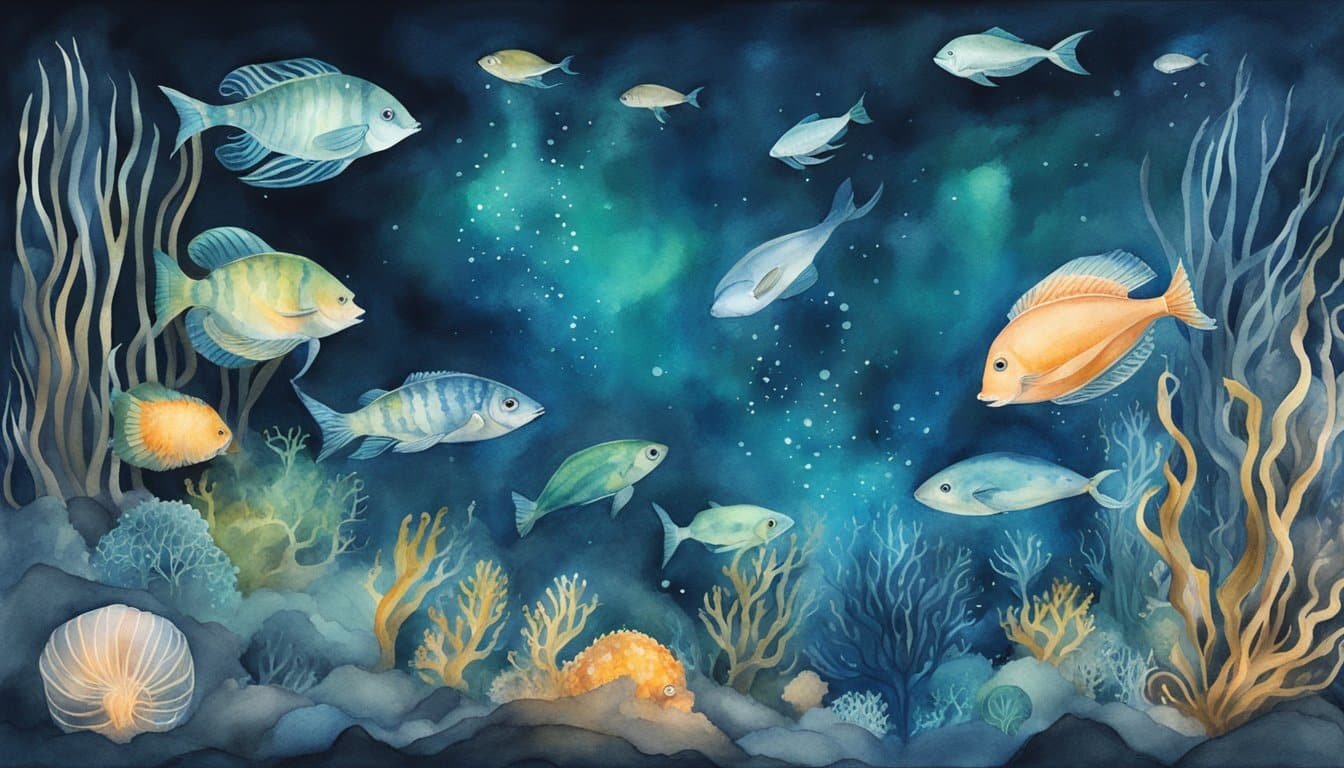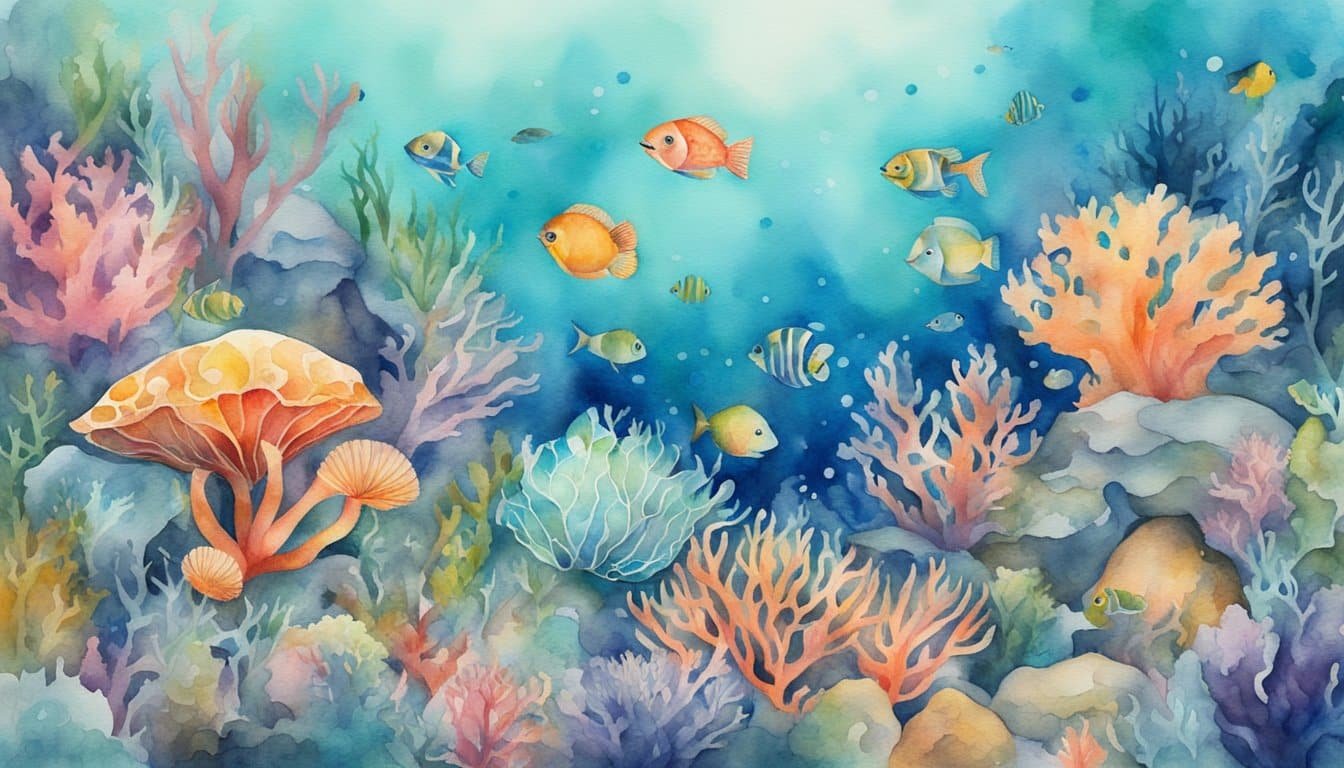Discovery of New Deep Sea Creatures
The deep sea, Earth’s final frontier, continues to surprise with novelties, where new species await under tremendous pressures and in pitch darkness.
Exploration Endeavors
In the vastness of the deep sea, miles below the ocean surface, technologically advanced expeditions are essential for discovery. Initiatives like those by the International Seabed Authority facilitate such endeavours, often involving a range of pioneering equipment designed for extreme depths. Submersibles, remotely operated vehicles (ROVs), and autonomous underwater vehicles (AUVs) scout the once-inaccessible abyssal plains, revealing the uncharted territory that lays hidden.
Species New to Science
Every expedition brings forth the possibility of encountering species hitherto unknown to science. The Pacific Ocean, covering a third of the Earth’s surface, is particularly rich in areas nearly untouched by humans. Recent dives have unveiled creatures that defy imagination, their forms and behaviors fine-tuned to an alien world. Current Biology features studies of these organisms, emphasizing not only the novelty but also the critical importance of these new species to our understanding of biological diversity. Even in known areas, the discovery rate implies that much of the deep sea is still unexplored, fostering a sense of urgency and curiosity amongst the scientific community.
Habitats and Ecosystems

Discoveries in the deep sea continue to reveal diverse and dynamic ecosystems that thrive in some of the planet’s most extreme and unexplored environments. These habitats host an array of deep-sea creatures that have adapted to survive the unique conditions found on the sea floor.
Hydrothermal Vents and Seamounts
The Pacific Ocean is host to extraordinary geological features such as hydrothermal vents and seamounts. Hydrothermal vents, often described as underwater geysers, are known to support unique attributes of the world’s largest ecosystem. They are hotspots for biodiversity, providing the energy that fuels entire ecosystems without sunlight. Similarly, seamounts create complex habitats that bolster high levels of species endemism and diversity. These underwater mountains are formed by volcanic activity and rise from the seabed, yet do not reach the surface.
Impact of Climate Change
Climate change poses significant threats to deep-sea ecosystems. Changes in ocean temperature, chemistry, and currents due to climate change can alter the delicate balance of marine habitats. For instance, rising sea temperatures may shift the distribution of species and affect the availability of food for deep-sea creatures. Researchers have proposed methods to monitor the dynamic changes in ecosystems in the deep sea as a way to understand and possibly mitigate these effects. The establishment of marine parks and protected areas may also play a role in preserving these vital habitats against the changing climate.
Conservation and Threats

Deep-sea ecosystems are often out of sight and thus out of mind, yet they host an array of unique creatures and are faced with rising threats. It’s essential to understand the impact of human activities like deep-sea mining and the imperative to establish conservation measures to protect these fragile habitats.
Deep-Sea Mining and Its Effects
Deep-sea mining, particularly in the Clarion-Clipperton Zone (CCZ), could offer access to valuable minerals such as manganese, nickel, cobalt, and copper. These metals are crucial for modern technology, including renewable energy infrastructure and batteries. However, such mining exploration could disrupt the seafloor’s biodiversity, threatening species that are adapted to the high pressure and low light of deep-sea environments. The sediment plumes generated by mining activities have the potential to travel vast distances, affecting filter feeders and other marine life. Moreover, the noise and light pollution may displace or disorient creatures unaccustomed to such disturbances.
Mining exploration also raises concerns over legal and environmental regulations in international waters. Contracts for mining within the CCZ are granted by the International Seabed Authority, but there’s a pressing need for research to inform guidelines that adequately protect against ecosystem damage.
Protective Measures and Policies
In an effort to safeguard deep-sea ecosystems, various protective measures and policies are being considered. The National Oceanic and Atmospheric Administration (NOAA) conducts research to improve understanding of these environments and inform policy. International agreements on the conservation of marine biological diversity of areas beyond national jurisdiction are also in development.
Biodiversity conservation requires protecting known hotspots and potentially undiscovered communities. The CCZ, a vast area rich in manganese nodules, is of particular interest since it’s both a region targeted by mining companies and a zone with significant ecological importance. The challenge lies in balancing the economic desires of metals companies with the need to preserve the ecological integrity of the deep sea. Strict environmental protocols for mining activities, including robust environmental impact assessments and long-term monitoring programs, are vital measures for protection.
Entities such as the International Seabed Authority, which issues contracts for minerals exploration, must integrate scientific knowledge into their policymaking, emphasizing sustainability and precaution to ensure that the deep sea—and its countless mysteries—remain unmarred.

